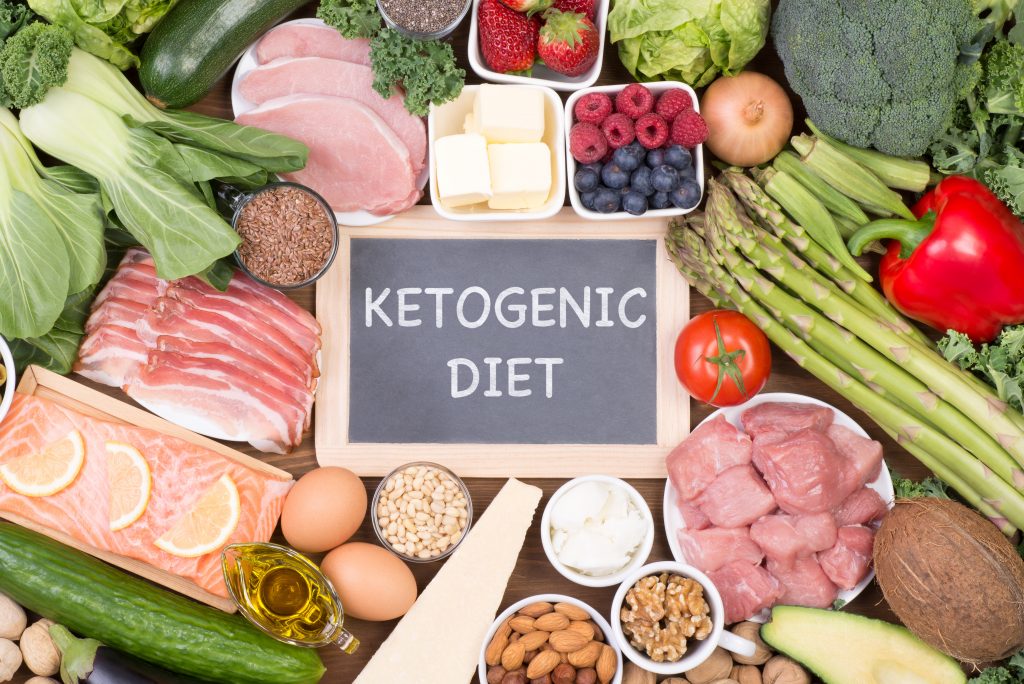What is ketosis?
Ketosis is a metabolic process that occurs when you consume a very low carb, moderate protein, high fat diet that causes the body to switch from using glucose as it’s primary source of fuel to using fat stores. Ketones are produced when the body burns fat when glucose isn’t available. Depending on the individual, ketosis may take anywhere from a few days to a couple months to achieve.
Who can benefit from a ketogenic low carb high fat diet?
Anyone who is looking to reduce body fat — whether it’s 10lbs or 100lbs — can do so using a ketogenic diet. It can be used short term for a few weeks, or long term for years. It is particularly recommended to control and even eliminate Type II diabetes.
The ketogenic low carb high fat diet can also be very useful in treatment for some diseases like epilepsy, Alzheimer’s, Parkinson’s, and even cancer.
Wait…you ask…don’t we NEED carbs to live and function?? NO, we don’t. Unlike fats and proteins which ARE required to live and function, we do not NEED carbs. The body will make glucose on its own via a process called gluconeogenesis.
Benefits to ketosis:
- Well controlled blood sugar levels
- Reduced or eliminated sugar/carb cravings
- Weight loss that is maintainable
- Improved metabolic function
- Improved sleep quality
- Decreased anxiety
- Improved triglyceride levels and HDL cholesterol levels
- Ketones are the preferred fuel source for muscles, heart, liver, and brain.
- Lower levels of inflammation
- Improved immune system
- Improved sex drive and fertility
How to implement a ketogenic diet
Because carb tolerance varies from person to person, it can be trial and error to determine how many carbs you’re allowed while maintaining ketosis. This will likely require ketone testing (urine, blood, or breath).
The range is about 15g to 90g of carbs per day. Generally speaking, a more fit and leaner person can tolerate more carbs than an unfit over-fat person. Keep in mind the carb total includes fiber, the “net carb” rule in other diets does not apply here.
Macro nutrient ratios on a ketogenic low carb high fat diet:
~70% calories from fat
~25% calories from protein
~5% calories from carbs
To obtain the above ratios, which are critical to your success on the plan, planning your meals is required. Choose high-fat meats, coconut oil, olive oil, fatty fish, and low carb nuts. Eliminate all fruit and grains; include low carb vegetables only, like greens and cauliflower. Avoid very lean cuts of meat. Dairy is allowed. Choose full-fat dairy only like cheese, cottage cheese, heavy cream, and yogurt. Milk however is too high in sugar and is eliminated.
Common mistakes that keep you out of ketosis:
- You are still eating too many carbs.
- You are not testing ketone levels, therefore you’re playing a guessing game.
- Your protein levels are too high and your fat not high enough. This will cause the body to convert protein into glucose, a process called gluconeogenesis.
- You’re consuming too few or too many calories.
- Chronic stress and lack of sleep are raising cortisol and blood sugar levels.
Drawbacks of a ketogenic low carb high fat diet
Some still believe that “all that fat” will clog your arteries, give you high unhealthy levels of cholesterol, and give you heart disease. Fortunately NONE of these are true, but there are still a few drawbacks…
- Adjustment to the diet may range anywhere from no discomfort to moderate or worse discomfort as the body must make a switch from relying on sugar (glucose) to using fat stores for energy.
- Getting certain vitamins, minerals, and other nutrients through food may be quite challenging, especially long-term.
- Social events may be difficult due to the restrictions.
- Maintaining an net alkaline load in the blood may be extra challenging due to highly acidic meats and fats. (Don’t confuse this with a condition called ketoacidosis, not at all the same thing) Try fresh lemons and limes in your water to stay alkaline.
For more info about the ketogenic low carb high fat diet or to get started on a nutrition plan, email me at [email protected]
